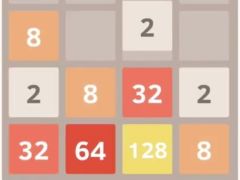SPIDER SOLITAIRE
SIMILAR GAMES
Description
Spider Solitaire - Games Unblocked
About Spider Solitaire - Games Unblocked
Welcome to our comprehensive guide to Spider Solitaire, a timeless card game that continues to captivate players with its blend of strategy, logic, and a touch of luck. Here at Games Unblocked, we are dedicated to providing access to classic and engaging games, and Spider Solitaire stands as a prime example of enduring digital entertainment. This intricate card game, often found in its digital iteration, presents a compelling challenge that tests your ability to meticulously plan and execute moves to achieve victory. The core objective is to sort a deck of cards into their proper suits and descending order, a task that requires both foresight and adaptability. As you delve deeper into the gameplay, you will discover the subtle nuances that make Spider Solitaire a profoundly rewarding experience for those who seek a mental workout.
The popularity of Spider Solitaire is rooted in its elegant yet demanding gameplay. Unlike simpler solitaire variants, Spider Solitaire involves managing two decks of cards, adding layers of complexity and strategic depth. The arrangement of cards on the tableau is crucial, and understanding the flow of the game, anticipating future possibilities, and making calculated decisions are paramount to success. Each move has consequences, and a well-thought-out sequence of actions can lead to a swift resolution, while a hasty or ill-considered move can quickly lead to a stalemate. This delicate balance between planning and reaction is what keeps players returning to Spider Solitaire time and time again.
The Essence of Spider Solitaire Gameplay
At its heart, Spider Solitaire is a game of card sequencing and tableau management. The game begins with ten piles, or columns, of cards laid out in the tableau. Eight of these piles contain seven cards, while the remaining two contain six. The uppermost card of each pile is turned face-up, providing the initial playable elements. The remaining cards are held in a stock pile, which can be dealt onto the tableau when no further moves are immediately apparent. The primary goal is to construct descending sequences of cards within a single suit, starting from the King and progressing all the way down to the Ace. Once a complete sequence of thirteen cards, from King down to Ace, is formed within a single suit and column, that sequence is automatically removed from the tableau, bringing you closer to winning the game.
The challenge lies not only in forming these sequences but also in managing the limited space on the tableau. Cards can be moved between columns if they are placed on top of another card of one rank higher, regardless of suit. However, to build a complete, removable sequence, all cards within that sequence must be of the same suit. This rule significantly increases the strategic complexity. Players must constantly assess the best placements for cards, considering how each move might open up new opportunities or inadvertently block crucial pathways. The interplay between different suits, the strategic use of empty columns, and the careful timing of dealing from the stock pile are all vital components of a winning Spider Solitaire strategy.
Understanding the Tableau and Stock
The tableau in Spider Solitaire is where the primary action unfolds. It is composed of ten columns, each designed to hold a stack of cards. The initial setup is designed to present an immediate puzzle, with face-up cards offering the first set of strategic decisions. As the game progresses, you will frequently move cards between these columns. A fundamental rule of movement is that you can place a card onto another card if the receiving card is one rank higher, irrespective of its suit. For example, a 7 of Spades can be placed on an 8 of Clubs, or an 8 of Hearts. This flexibility allows for significant manipulation of the board.
However, when the goal is to create a solvable sequence for removal, the rules become more stringent. A sequence must consist of cards of the same suit and in descending order. For instance, a sequence of Hearts would require the 10 of Hearts, followed by the 9 of Hearts, the 8 of Hearts, and so on, all stacked together in one column. The stock pile is your reserve of cards, held in reserve to be dealt when you encounter a situation where no further moves can be made on the tableau. Dealing from the stock places one card face-up on top of each of the ten tableau columns. This action can significantly alter the game state, potentially opening up new possibilities but also sometimes making existing situations more challenging. The strategic timing of dealing from the stock is a critical aspect of mastering Spider Solitaire.
Varieties of Spider Solitaire: Difficulty Levels
To cater to a wide range of players, Spider Solitaire is typically offered in various difficulty levels, primarily distinguished by the number of suits used in the game. These variations not only alter the challenge but also the strategic approaches required to succeed. At Games Unblocked, we aim to provide accessible yet engaging versions of this classic game, allowing players to select the experience that best suits their skill level and preference.
One Suit Spider Solitaire (Easy)
The easiest and most approachable version of Spider Solitaire utilizes only one suit of cards. In this variant, the game is played with a standard 52-card deck, but all cards are of the same suit (usually Spades). The objective remains the same: to arrange the cards in descending order from King to Ace. Because all cards are of the same suit, any card can be placed on any card of the next higher rank. This significantly simplifies the game, as the constraint of matching suits for sequence building is removed. One suit Spider Solitaire is an excellent entry point for new players to grasp the fundamental mechanics of card stacking and tableau manipulation without the added complexity of multiple suits.
Success in one suit Spider Solitaire largely hinges on efficient card management and planning for future moves. While the suit-matching constraint is absent, the sheer number of cards and the limited tableau space still require careful consideration. Players must focus on clearing columns by forming complete sequences and strategically using empty columns to temporarily store cards, thereby freeing up valuable space on the tableau. This version provides a satisfying challenge for those looking for a less demanding but still engaging solitaire experience, making it a popular choice for casual play and for developing foundational Spider Solitaire skills.
Two Suit Spider Solitaire (Medium)
Stepping up in difficulty, two suit Spider Solitaire introduces a greater level of strategic depth by incorporating two different suits (typically Spades and Hearts). In this mode, players work with a 104-card deck (two standard 52-card decks). The core gameplay mechanics remain the same, but the addition of two suits significantly complicates the process of building sequences. A descending sequence can only be built if the cards within it are of the same suit. This means a 7 of Spades can be placed on an 8 of Spades, but not on an 8 of Hearts, and vice versa. This restriction demands more careful planning and often requires players to make difficult choices about which sequences to prioritize.
Mastering two suit Spider Solitaire requires a keen eye for card patterns and the ability to see multiple moves ahead. Players must be adept at identifying potential sequences of the same suit while also managing the placement of cards from different suits. Strategic use of empty columns becomes even more critical, as they offer a safe haven for cards that cannot currently be placed into a growing sequence of their suit. The balance between risk and reward in dealing from the stock pile also becomes more pronounced. This intermediate level provides a robust challenge for players who have a solid understanding of the game's basics and are ready to engage with more complex strategic scenarios.
Four Suit Spider Solitaire (Hard)
The ultimate challenge in the world of Spider Solitaire is the four suit variant. This mode uses two full decks of 104 cards, encompassing all four standard suits: Spades, Hearts, Diamonds, and Clubs. The rules are identical to the two suit version, but the presence of all four suits dramatically increases the difficulty and the number of possible combinations. Building a complete, valid sequence of King down to Ace requires not only descending rank but also absolute suit consistency. This means that a sequence of Clubs can only include other Clubs, and so on. The complexity of managing four distinct suits on the tableau creates a highly intricate puzzle.
Successfully navigating four suit Spider Solitaire demands exceptional strategic thinking, patience, and analytical skills. Players must meticulously track the available cards of each suit and anticipate how their moves will affect the potential for completing sequences across the tableau. The game often feels like a complex chess match, where every move must be carefully weighed against its long-term implications. Dealing from the stock pile becomes a high-stakes decision, as it can introduce cards of any suit, potentially disrupting carefully laid plans or, conversely, providing the exact card needed to break a deadlock. This is the definitive test for any Spider Solitaire enthusiast, offering the most profound sense of accomplishment upon victory.
Strategies for Mastering Spider Solitaire
Achieving consistent success in Spider Solitaire involves more than just understanding the rules; it requires the development of effective strategies and tactical approaches. Whether you are playing the one, two, or four suit version, certain principles can significantly improve your chances of clearing the tableau and achieving victory. These strategies focus on optimizing card placement, managing the tableau efficiently, and making smart decisions when dealing from the stock.
Prioritize Revealing Hidden Cards
One of the most fundamental strategies in Spider Solitaire is to prioritize revealing hidden cards. Many cards in the tableau start face-down, obscured by other cards. Your primary objective should be to create opportunities to turn these cards face-up as quickly as possible. Each revealed card represents a new potential move, a new piece of information, and a step closer to forming complete sequences. Focus on clearing cards from columns that have many face-down cards, even if it means making a less-than-ideal temporary placement. Uncovering these hidden cards can dramatically open up the game and reveal pathways that were not initially apparent.
When you have a choice between moving a card to an empty column or moving it to a column where it will reveal a face-down card, the latter is almost always the more advantageous choice. This is especially true in the earlier stages of the game. By consistently working to reveal as many cards as possible, you increase the overall flexibility of your board and create more options for future moves. This proactive approach to uncovering hidden cards is a cornerstone of effective Spider Solitaire play.
Make the Most of Empty Columns
Empty columns are a precious resource in Spider Solitaire, and making the most of empty columns is a crucial strategy. An empty column can accept any card from the tableau, regardless of rank or suit. This makes them incredibly useful for temporarily storing cards that you cannot currently place elsewhere, or for breaking up large, unwieldy stacks to access cards underneath. However, it's important to use them wisely. Avoid filling an empty column with a single card if that move prevents you from making a more beneficial move elsewhere on the board or revealing a hidden card.
Ideally, an empty column should be used to store a card that will enable you to immediately make another, more significant move. For instance, if you have an empty column and can move a card there to expose a card that can then complete a sequence, that is a strong play. Be mindful of the rank of the card you place in an empty column, as it will dictate what can subsequently be placed on top of it. Strategic use of empty columns can be the difference between a win and a loss, providing the flexibility needed to maneuver cards and progress towards forming those coveted King-to-Ace sequences.
Plan Your Sequences Carefully
Building sequences is the ultimate goal, so planning your sequences carefully is paramount. In two suit and four suit games, this means paying close attention to suits. Don't start building a sequence with a card if you don't have a clear path to completing it. Look for opportunities to build sequences that are currently viable and don't require you to break up other important stacks of cards. It's often better to make progress on multiple potential sequences rather than focusing all your efforts on one that might become blocked.
Consider the cards that are currently available and those that are likely to become available soon (i.e., face-down cards). If you have a choice between placing a card that continues one sequence or another, consider which sequence is closer to completion or which might be easier to finish given the current state of the tableau. Sometimes, it's beneficial to hold onto a card that could start a sequence if it's needed to complete another, more promising sequence elsewhere. This forward-thinking approach to sequence building is key to efficient play.
Strategic Dealing from the Stock Pile
The stock pile is a critical element, and strategic dealing from the stock pile can make or break your game. You should generally only deal from the stock when you have no other possible moves left on the tableau. Dealing prematurely can often lead to a worse situation, as the new cards might not fit neatly into your existing plans and could even block crucial pathways. When you do deal, it's because you have exhausted all other options for movement.
Pay close attention to the cards that are revealed when you deal. Sometimes, a dealt card might be exactly what you need to complete a sequence or make a significant move. Other times, it might seem to complicate matters. The key is to adapt your strategy based on what the stock reveals. If a dealt card allows you to make a series of moves that were previously impossible, seize that opportunity. This strategic patience and careful timing of dealing from the stock are hallmarks of a skilled Spider Solitaire player.
Why Play Spider Solitaire Unblocked?
In today's digital landscape, access to engaging and mentally stimulating games is more important than ever. Spider Solitaire offers a unique blend of challenge and relaxation, making it an ideal pastime for players of all ages. Here at Games Unblocked, we are committed to providing a seamless and enjoyable experience, allowing you to dive into this classic card game without interruption or restriction. Playing Spider Solitaire unblocked means you can access this strategic gem whenever and wherever you choose, offering a perfect mental escape during breaks or downtime.
The cognitive benefits of playing Spider Solitaire are well-documented. The game actively engages your problem-solving skills, enhances your concentration, and improves your ability to plan ahead. Each game presents a fresh puzzle, requiring you to analyze the board, develop strategies, and adapt to changing circumstances. This constant mental engagement helps to keep your mind sharp and agile. Furthermore, the sense of accomplishment that comes from successfully clearing a difficult game of Spider Solitaire can be incredibly satisfying. We believe that everyone should have the opportunity to experience the enduring appeal of this classic game, and by offering it unblocked, we aim to make that a reality. Embrace the challenge, hone your skills, and enjoy the timeless pleasure of Spider Solitaire.
Spider Solitaire, a classic card game, challenges players to arrange a deck of cards in order using minimal moves. The objective is to create descending sequences from King to Ace within the tableau columns. Once a sequence is completed, it is automatically removed from the tableau, the goal being to clear all cards. The game is renowned for its ability to combine both luck and strategy, giving players the chance to plan their moves ahead and adapt their strategy based on the situation of the cards.
Refine Skills with Varied Difficulties
Spider Solitaire offers varying levels of difficulty by providing one, two, or four suits to play with, which adjusts the complexity and strategy required to win. Beginners might start with the one-suit game to grasp the basic mechanics, while more experienced players can challenge themselves with the four-suit version, which requires more strategic planning and foresight. This versatility makes Spider Solitaire an enduring favorite among solitaire games, appealing to both casual players looking for a relaxing pastime and more competitive players seeking a mental exercise.
















































